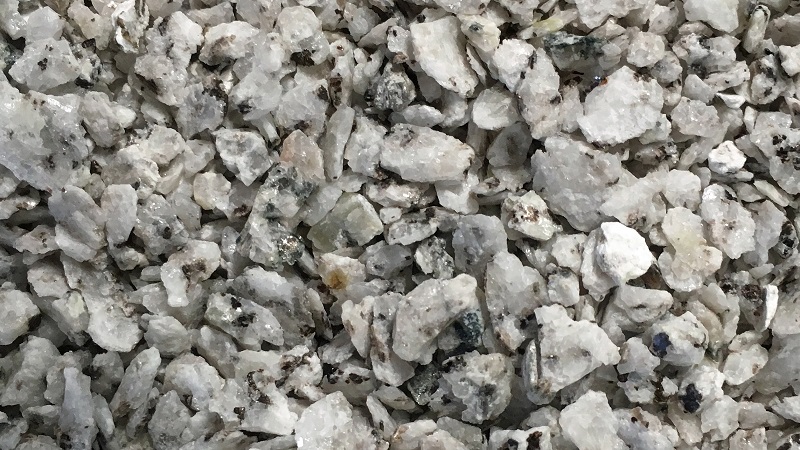Published:

Granite from Cornwall will be examined by UK scientists as part of a £1.8 million project in order to help the country increase its use of geothermal energy.
Cornwall's heat-producing granite has already made the area a hotbed for geothermal exploration. In late 2018, drilling began at the £18m United Downs project near Redruth, where engineers hope there could be enough resource to provide electricity for 3000 homes.
Now, scientists from the British Geological Survey (BGS), Heriot-Watt University (HWU) and the Camborne School of Mines at Exeter University will work with industrial partners Geothermal Engineering Limited, GeoScience, and Computer Modelling Group, together with the Cornwall and Isles of Scilly Local Enterprise Partnership on a new project that will give south west England and the wider UK the knowledge it needs to harness the abundant geothermal energy beneath its surface.
The £1.8 million research project, Geothermal Power Generated from UK Granites (GWatt), is funded by the Natural Environment Research Council (NERC).
Geothermal is a priority area of research for NERC and the BGS, and is part of their portfolio of research into decarbonising the energy system.
In 2018 drilling began at the Glasgow Geothermal Energy Research Field Site, to enable research into Glasgow's geology, underground water systems and the potential for the use of heat from the water in its disused coal mines. Data is also being collected from the water contained in gravels beneath Cardiff so that their potential for geothermal district heating can be assessed.
Dr Chris Rochelle, a geochemist at BGS, is leading the GWatt project and hopes that the team's work will encourage the use of geothermal energy in the UK.
Dr Rochelle said: “Geothermally-generated electricity is a carbon-free, renewable source that is available all the time, unlike wind and solar.
“Knowledge gained from GWatt could help switch on investment in this abundant source of renewable energy by reducing uncertainty around the geology, and demonstrating to investors that these systems are worth funding.
“The granites of South West England have the highest subsurface heat flow of any rocks in the UK, which leads to the highest temperatures at depth.
“We will be working with the United Downs Deep Geothermal Power (UDDGP) project in Cornwall, which will give us access to unique sets of new data from depths of up to 4.5 km. We will be carrying out innovative tests and analyses that will prove the potential for geothermal not just on that site, but across other granites in SW England and the wider UK.
“The knowledge gained from GWatt could underpin a new geothermal industry for the south west of England, and have an impact in the rest of the UK and internationally.
“The data we collect for granite, coupled with increased confidence in the performance of computer models, could also tell us how limestone and sandstone will behave in geothermal settings, which means we could apply this learning to sites across the UK and beyond.
Dr Sabine Den Hartog and Dr Dan Arnold from Heriot-Watt University will conduct innovative research to better understand the United Downs geothermal system under simulated laboratory conditions.
Dr Den Hartog said: “Our laboratory in Heriot-Watt recreates the conditions found in nature to examine the material properties under those conditions.
“We will be subjecting material similar to the granite found in Cornwall to the natural pressure and temperature conditions and assess how their properties change over the lifetime of the UDDGP project.”
Dr Robin Shail, a geologist from the University of Exeter's Camborne School of Mines (CSM), said: “One of the aspects that the CSM team will be addressing is how the geological history of fault systems across south west England has influenced their ability to allow the flow of geothermal fluids at depth.
“Together with colleagues, Chris Yeomans and Dr Matt Eyre, we'll be mapping some of the larger fault systems, where they pass through the predicted hotter parts of the granites, in order to identify some of the potentially prospective areas for future deep geothermal.
“It's exciting to be involved in such an exciting and important project and allows us to build on the recent research we've undertaken on granites and fault systems throughout the region.”
Peter Ledingham, UDDPG project manager, said: “It has been known for decades that the heat-producing granites of SW England represent a significant untapped geothermal resource.
“The wells drilled at UDDGP will be almost twice as deep as any drilled in Cornwall before and will test the concept of developing geothermal systems within a natural fault structure.
“The success of this, and future, projects will depend on understanding the mechanical, hydraulic and geochemical characteristics of the target structures and work carried out under the GWatt programme should contribute significantly to that understanding.”
Professor John Underhill, chief scientist at Heriot-Watt University and a member of the NERC UK Geos Science Advisory Group (SAG), said: “The need to address the UK's carbon emission targets and decarbonise the energy system represents a major challenge.
“Geothermal energy has the potential to progress both aspirations and the GWatt project will provide the means by which to test whether hot Cornish rocks will form part of the wider energy mix.”
The GWatt team expects the project to be completed by June 2022. A dedicated website will be made available soon so that the public can follow the project's progress.